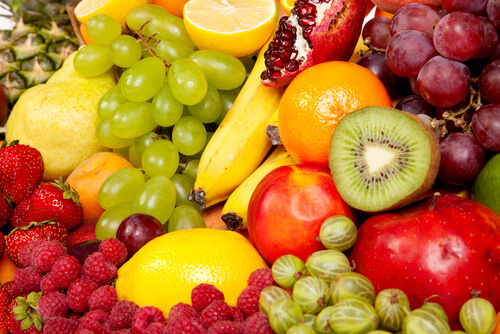DASH stands for Dietary Approaches to Stop Hypertension. Dietary Approaches to Stop Hypertension diet is one of the permanent and lifelong approaches for a healthy eating which is designed to help treat or prevent regular high blood pressure. The DASH diet encourages you to reduce the sodium in your diet and also to eat a variety of foods rich in nutrients that help lower blood pressure, such as potassium, calcium, and magnesium.

Because the DASH diet is a healthy diet to eat, it also offers more health benefits besides just lowering blood pressure. The DASH diet is also in line with dietary recommendations to prevent osteoporosis, cancer, heart disease, stroke, and diabetes.
DASH diet: What to eat
Both versions of the DASH diet include lots of whole grains, fruits, vegetables and also low-fat dairy products. The DASH diet also includes some fish, poultry, and legumes, and encourages a few nuts and seeds a few times a week.
You can eat red meat, sweets, and fats in small amounts. The DASH diet is low in saturated fat, cholesterol, and total fat.
Grains: 6 to 8 servings a day

Grains include bread, cereal, rice, and pasta. Examples of one serving of grains will include 1 slice whole-wheat bread, 1-ounce dry cereal, or 1/2 cup cooked cereal, rice or pasta.
Focus on few whole grains because they have more fiber and nutrients than do refined grains. For instance, use brown rice instead of white rice, whole-wheat pasta instead of regular pasta and whole-grain bread instead of white bread
Vegetables: 4 to 5 servings a day

Vegetables like tomatoes, carrots, sweet potatoes, greens, broccoli and other vegetables are with full of fiber, vitamins, and such minerals as potassium and magnesium. Examples of one serving include 1 cup raw leafy green vegetables or 1/2 cup cut-up raw or cooked vegetables.
Don’t think of vegetables only as side dishes, a hearty blend of vegetables served over brown rice or whole-wheat noodles can serve as the main dish for a meal.
Fresh and frozen vegetables are both of good choices. When you are buying frozen and canned vegetables, choose those labeled as low sodium or without added salt.
Fruits: 4 to 5 servings a day

Many fruits need little preparation to become a healthy part of a meal or healthy part of a snack. Like vegetables, they’re packed with fiber, potassium, and magnesium and are typically low in fat — coconuts are an exception. Examples of one serving include one medium fruit, 1/2 cup fresh, frozen or canned fruit, or 4 ounces of juice.
Have a piece of fruit with meals and one as a snack, then round out your day with a dessert of fresh fruits topped with a dollop of low-fat yogurt.
Leave on edible peels whenever possible. The peels of apples, pears and most of the fruits with pits add interesting texture to recipes and contain healthy nutrients and fiber.
If you choose canned fruit or juice, make sure no sugar is added.
Dairy: 2 to 3 servings a day

Milk, yogurt, cheese and other dairy products are major sources of calcium, vitamin D, and protein. But the key is to make sure that you choose dairy products which are low-fat or fat-free because otherwise they can be a major source of fat — and most of it is saturated. Examples of one serving include 1 cup skim or 1 percent milk, 1 cup low-fat yogurt, or 1 1/2 ounces part-skim cheese.
Low-fat or fat-free frozen yogurt can help you boost a number of dairy products you eat while offering a sweet treat. Add fruit for a healthy twist.
If you have trouble digesting dairy products, choose lactose-free products or consider taking an over-the-counter product that contains the enzyme lactase, which can reduce or prevent the symptoms of lactose intolerance.
Go for an easy way on regular and also even fat-free cheeses because they are very high in sodium.
Lean meat, poultry, and fish: 6 servings or fewer a days
Meat can be a rich source of protein, B vitamins, iron, and zinc. Choose lean varieties and aim for no more than 6 ounces a day. Cutting back on your meat portion will also allow room for more vegetables.
Trim away skin and fat from poultry and meat and then bake, broil, grill or roast instead of frying in fat.
Eat heart-healthy fish, such as salmon, herring, and tuna. These types of fish are high in omega-3 fatty acids, which can help lower your total cholesterol.
Remember, healthy eating is not an all-or-nothing proposition. What’s most essential is that, on average, you eat healthier foods with plenty of variety both to keep your diet nutritious and avoid extremes. And with the DASH diet, you can have both them.

